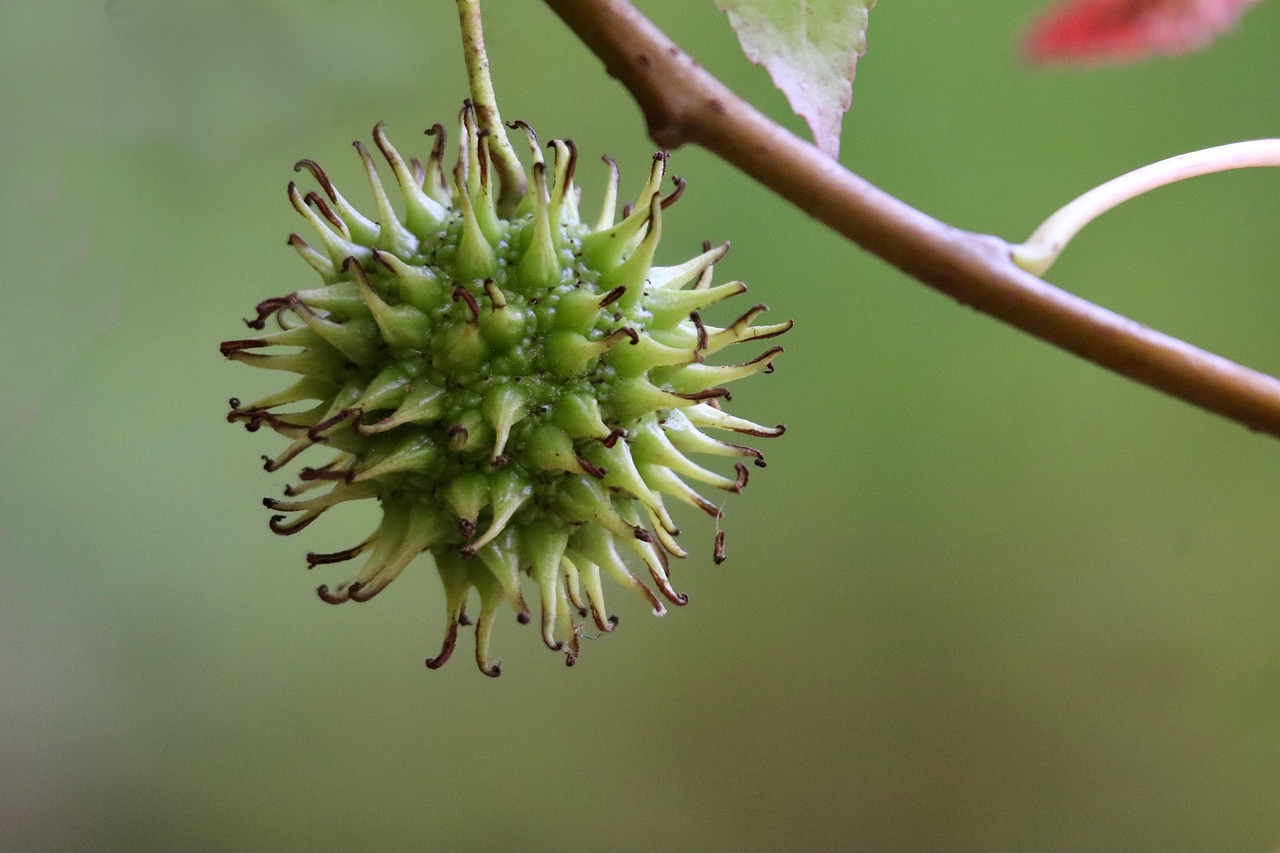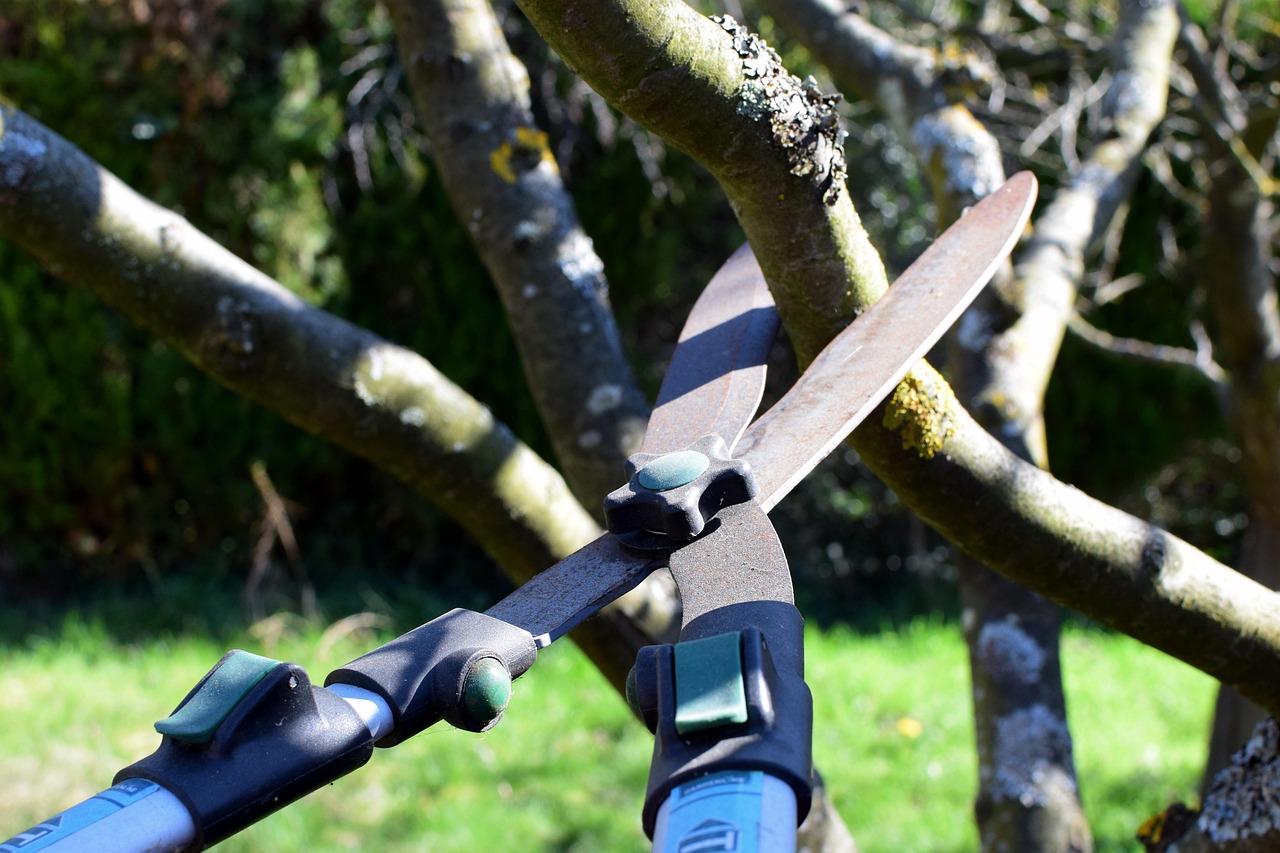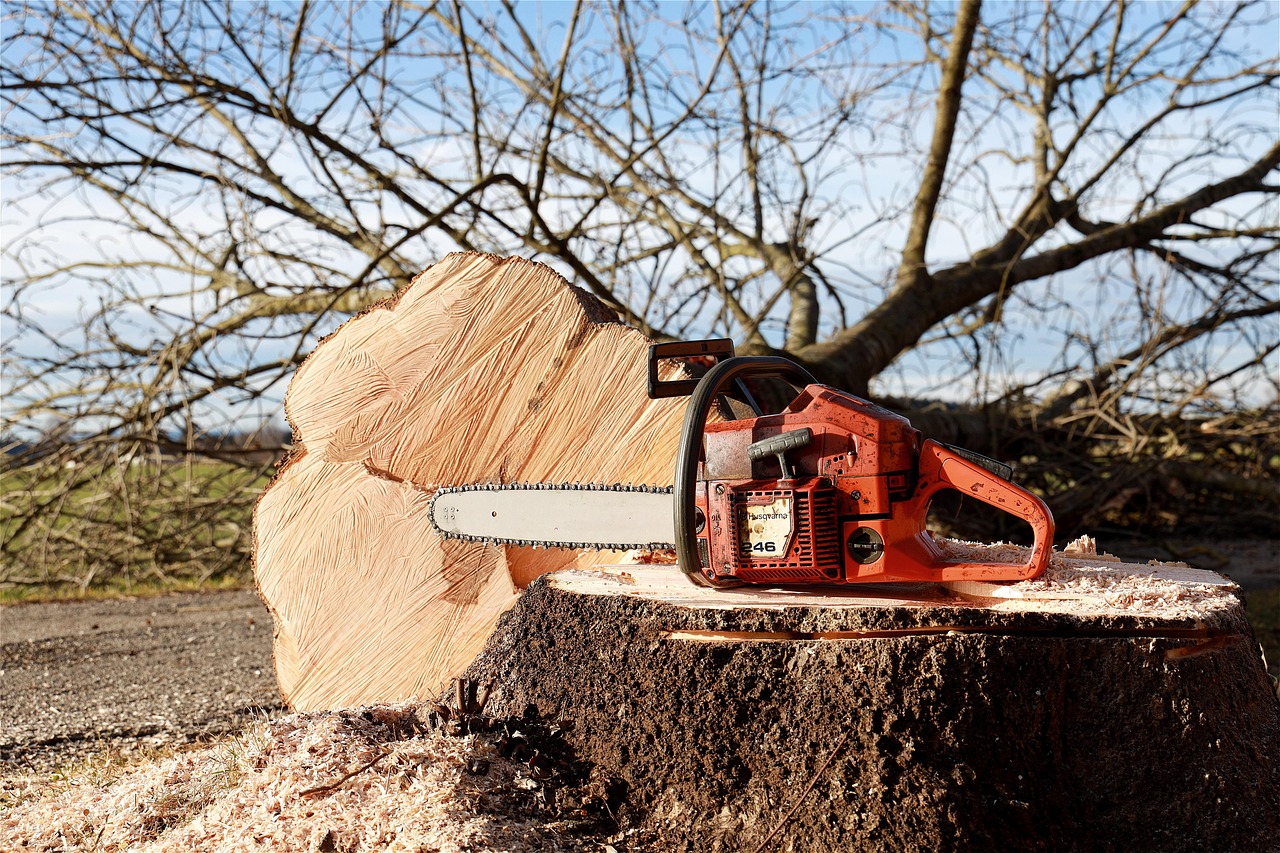Fruit tree pruning is essential for organic gardeners to enhance tree health, increase fruit production, and improve air circulation. Proper techniques lead to stronger trees and better fruit quality, while minimizing pests and diseases.
Understanding Fruit Tree Pruning
Pruning fruit trees is a vital practice for maintaining healthy growth and ensuring a bountiful harvest. Organic gardeners often face unique challenges and opportunities when it comes to pruning. Unlike conventional methods, organic gardening emphasizes natural techniques that promote the ecosystem’s health. This approach not only focuses on the end product but also on the entire process of growing fruit trees.

In organic gardening, pruning serves multiple purposes. It helps shape the tree, encourages new growth, and removes dead or diseased branches. By understanding the specific needs of different fruit trees, gardeners can effectively enhance the vitality of their plants.
Benefits of Pruning
Pruning offers several benefits that are crucial for the health and productivity of fruit trees. Here are some key advantages:
- Improved Air Circulation: Proper pruning allows for better air flow within the tree canopy, reducing the likelihood of fungal diseases.
- Increased Sunlight Exposure: Thinning out branches enables sunlight to reach all parts of the tree, promoting even ripening of fruit.
- Enhanced Fruit Quality: Pruned trees often produce larger, healthier fruit due to improved nutrient allocation.
- Better Structural Integrity: Removing weak or overcrowded branches helps to maintain a strong structure that can withstand wind and heavy fruit loads.
When to Prune
The timing of pruning is critical for success. Generally, the best time to prune fruit trees is during their dormant season, which is typically in late winter or early spring before new growth begins. However, specific timing may vary depending on the type of fruit tree:

| Fruit Tree Type | Best Time to Prune |
|---|---|
| Apple Trees | Late winter to early spring |
| Pear Trees | Late winter to early spring |
| Peach Trees | Late winter (after the last frost) |
| Citrus Trees | Late winter to early spring |
Pruning during dormancy allows the tree to heal quickly and minimizes stress. However, summer pruning can also be beneficial for certain trees. It can help control growth and shape without removing too much foliage.
Tools for Pruning
Having the right tools makes a significant difference in the efficiency and effectiveness of pruning. Here are some essential tools every organic gardener should consider:
- Hand Pruners: Ideal for small branches and precise cuts.
- Loppers: Useful for thicker branches that hand pruners cannot handle.
- Saws: A small pruning saw can help with larger cuts.
- Gloves: Protect your hands from cuts and scrapes while working.
- Ladders: Ensure safety when reaching higher branches.
Maintaining these tools is equally important. Clean and sharpen them regularly to ensure clean cuts that minimize damage to the tree.

Pruning Techniques
Several techniques can be employed when pruning fruit trees. Each method has its benefits and applications based on the tree’s age and condition:
- Crown Thinning: This technique involves selectively removing branches to improve light penetration and air circulation.
- Crown Raising: Removing lower branches allows more light to reach the ground and can facilitate mowing underneath the tree.
- Crown Reduction: This method reduces the overall height or spread of a tree without harming its shape.
- Surgical Pruning: Involves removing specific damaged or diseased branches while preserving healthy ones.
Using these techniques appropriately can lead to healthier trees and improved fruit yields. Understanding how to implement each technique will empower organic gardeners to make informed decisions about their pruning practices.
The art of pruning is not solely about cutting branches; it is about fostering an environment where trees can thrive naturally. By adopting proper techniques and understanding the requirements of their specific trees, organic gardeners can cultivate flourishing orchards that produce delicious fruit year after year.

Common Mistakes in Pruning
Even experienced gardeners can make mistakes when pruning their fruit trees. Understanding these pitfalls can help organic gardeners avoid damaging their trees and ensure optimal growth. Here are some common mistakes to watch for:
- Over-Pruning: Removing too many branches can stress the tree and reduce fruit production. It’s essential to prune judiciously, focusing on health rather than excessive shaping.
- Incorrect Timing: Pruning at the wrong season can expose trees to disease or inhibit growth. Always consider the specific needs of each tree type before deciding when to prune.
- Neglecting Tool Maintenance: Using dull or dirty tools can lead to ragged cuts that may invite pests and diseases. Regularly clean and sharpen tools before use.
- Ignoring Tree Structure: Failing to recognize the natural growth habit of a tree can result in poor shape and weak branches. Understand the tree’s structure to encourage healthy growth.
- Pruning Too Close to the Trunk: Cutting too near the trunk can damage the tree’s bark and impair healing. Leave enough space for new growth and healing.
Understanding Tree Growth Patterns
To effectively prune fruit trees, it’s important to understand their growth patterns. Different fruit trees have unique characteristics that influence how they grow and how they should be pruned. Here are some key points to consider:
- Growth Habit: Trees can be categorized as upright, spreading, or weeping. Each type requires different pruning techniques to maintain their natural shape.
- Fruit Production Cycle: Some trees produce fruit on last year’s growth, while others produce on new growth. Knowing this will guide when and how to prune.
- Age of the Tree: Young trees benefit from formative pruning to establish a strong structure, while older trees may require maintenance pruning to remove dead or diseased wood.
Specific Techniques for Different Fruit Trees
Each type of fruit tree has its own requirements for successful pruning. Understanding these specific needs can enhance tree health and fruit yield. Below are effective techniques tailored for various fruit types:
Apple Trees
Apple trees typically benefit from a combination of crown thinning and crown reduction. The aim is to keep the center open for light penetration. Here are essential steps:
- Remove any vertical shoots that grow straight up, known as water sprouts.
- Thin out crowded branches to improve air circulation.
- Cut back branches that are crossing over each other to prevent rubbing.
Pear Trees
Pear trees have a similar structure to apple trees, but they may require a slightly different approach:
- Encourage an open center by removing inward-growing branches.
- Focus on maintaining an even balance between fruiting spurs and new growth.
- Avoid heavy pruning in the first few years; shape gradually as the tree matures.
Peach Trees
Peach trees produce fruit on one-year-old wood, making timing crucial. Here are pruning tips:
- Prune right after harvesting to encourage new growth for next season.
- Crown thinning is important to maintain air circulation and sunlight exposure.
- Aim for an open center similar to apples and pears while promoting strong lateral branches.
Citrus Trees
Citrus trees require less aggressive pruning compared to other fruit trees. Consider these practices:
- Remove dead or damaged branches only as needed.
- Avoid heavy pruning; instead, focus on light thinning to maintain shape.
- Citrus trees benefit from maintaining a bushy shape which can enhance fruit production.
Post-Pruning Care
After pruning, it is essential to provide proper care to support recovery and growth. Here are several key steps to follow:
- Watering: Ensure that your trees receive adequate water, especially after pruning. This helps reduce stress and promotes healing.
- Mulching: Apply organic mulch around the base of the tree to retain moisture and suppress weeds.
- Pest Management: Monitor for pests and diseases after pruning, as open cuts can attract harmful insects.
- Nutrient Management: Consider applying organic fertilizers if needed to replenish nutrients in the soil.
Caring for your fruit trees post-pruning is crucial for encouraging healthy regrowth and maximizing fruit production. By following these guidelines, organic gardeners can ensure their efforts in pruning yield positive results in the garden.
Seasonal Considerations for Pruning
Understanding the seasons is crucial for effective fruit tree pruning. Each season presents unique conditions that can affect how and when to prune. Here’s a breakdown of how pruning practices can vary by season:
Spring Pruning
Spring is often the most popular time for pruning. As trees awaken from dormancy, this is the moment to assess growth and make necessary cuts:
- Timing: Prune just before new growth starts for optimal healing.
- Focus: Remove dead or damaged wood and thin out crowded branches to improve air circulation.
- Benefits: Spring pruning can help shape the tree for the growing season and encourage healthy fruit production.
Summer Pruning
Summer pruning can be beneficial for controlling growth and enhancing fruit quality. Here are some tips:
- Timing: Prune during the active growing season, typically after the last frost has passed.
- Focus: Remove water sprouts and any overly vigorous growth that can lead to overcrowding.
- Benefits: This method preserves the tree’s energy by redirecting it towards fruit production.
Fall Pruning
Fall is generally not recommended for heavy pruning, but some light maintenance can be done:
- Timing: Perform light pruning after harvest but before winter dormancy.
- Focus: Remove any damaged or diseased branches to reduce the risk of infection during winter.
- Benefits: Helps prepare the tree for winter by minimizing stress on the tree structure.
Winter Pruning
Winter is the dormant season for most fruit trees, making it an ideal time for more extensive pruning:
- Timing: Prune during the cold months when trees are fully dormant.
- Focus: Thin out crowded branches, remove dead wood, and shape the tree structure.
- Benefits: The trees are less susceptible to disease, and this method promotes vigorous spring growth.
Pest and Disease Management Post-Pruning
After pruning, it’s essential to monitor fruit trees for pests and diseases that may take advantage of open wounds. Implementing integrated pest management (IPM) strategies can minimize these risks. Here are some effective practices:
Pest Monitoring
Regularly inspect your trees for signs of pests. Here are common pests to watch out for:
- Aphids: Small, green insects that suck sap from leaves.
- Caterpillars: Larvae of moths that can defoliate trees.
- Spider Mites: Tiny pests that cause stippling on leaves.
Disease Prevention
Diseases can spread through open cuts or wounds on trees. To prevent this, consider the following:
- Copper Fungicide: Apply as a preventative measure after pruning to protect against fungal infections.
- Sealants: Use organic sealants on larger cuts to protect from pathogens.
- Cultural Practices: Maintain good airflow and avoid overhead watering to reduce moisture levels around trees.
The Role of Soil Health in Pruning Success
The health of the soil directly impacts the overall vitality of fruit trees. Here are strategies to enhance soil health, which in turn supports successful pruning outcomes:
Nutrient Management
Nutrients play a vital role in tree growth and recovery from pruning. Consider these practices:
- Soil Testing: Regularly test soil to determine nutrient levels and pH balance.
- Organic Amendments: Incorporate compost or well-rotted manure to enrich the soil.
- Crop Rotation: Rotate crops each year to prevent nutrient depletion and soil degradation.
Irrigation Practices
Irrigation also affects soil health and tree recovery. Here are some effective strategies:
- Drip Irrigation: Use this method to deliver water directly to the root zone, reducing waste and improving absorption.
- Avoid Overwatering: Ensure proper drainage to prevent root rot and other water-related issues.
- Mulching for Moisture Retention: Apply organic mulch around trees to maintain soil moisture levels.
Selecting Companion Plants
Companion planting can enhance the health of fruit trees and improve pest control. When selecting companion plants, consider the following benefits:
- Diversity in Planting: A variety of plants can attract beneficial insects that prey on pests.
- Nitrogen Fixation: Some plants, like clover, can enrich soil nitrogen levels, benefiting nearby trees.
- Pest Deterrents: Strong-scented herbs, such as basil or mint, can repel harmful insects when planted nearby.
The combination of proper pruning techniques, seasonal considerations, and an understanding of soil health contributes significantly to the success of fruit tree care in organic gardening. By employing these strategies, gardeners can create a fruitful ecosystem that benefits both their trees and their overall garden health.
Advanced Pruning Techniques
For organic gardeners looking to enhance their fruit tree care further, mastering advanced pruning techniques can be beneficial. These techniques can optimize tree health, improve fruit quality, and yield. Below are some advanced methods worth considering:
Espalier Pruning
Espalier is a pruning technique that allows trees to grow flat against a wall or fence. This method can save space and create an attractive feature in the garden:
- Structure: Use a framework of wires or trellis to train the branches to grow horizontally.
- Benefits: Enhanced sunlight exposure and airflow, leading to healthier fruit.
- Maintenance: Regular pruning is required to maintain the desired shape.
Renewal Pruning
This technique is particularly useful for older or neglected trees. It involves removing a significant number of older branches to encourage new growth:
- Process: Gradually remove one-third of the oldest branches each year over three years.
- Goal: Promote rejuvenation and improve overall tree vigor.
- Timing: Best performed in late winter or early spring when the tree is dormant.
Drop-Crotch Pruning
Drop-crotch pruning is a method that focuses on removing the tips of branches rather than cutting them back to a stub:
- Technique: Cut just above a lateral branch, allowing the tree to maintain its natural shape while reducing height.
- Advantages: Encourages new growth from lower branches and maintains the tree’s structural integrity.
Environmental Considerations
As organic gardeners, it’s essential to consider the environmental impact of pruning practices. Sustainable gardening techniques can significantly enhance biodiversity and ecosystem health. Here are some points to keep in mind:
- Minimize Waste: Compost all pruned materials rather than disposing of them. This practice returns nutrients to the soil.
- Permanently Plant Cover Crops: Use cover crops in between fruit trees to improve soil health and prevent erosion.
- Native Plants: Incorporate native companion plants to attract local pollinators and beneficial insects, enhancing the ecosystem.
Pruning Workshops and Resources
For gardeners looking to deepen their understanding of fruit tree pruning, numerous resources and workshops are available:
- Local Extension Services: Many agricultural extension offices offer workshops on organic gardening techniques, including pruning.
- Online Courses: Websites like Coursera and Udemy provide classes on horticulture and tree care.
- YouTube Tutorials: Various gardening channels offer visual guides on specific pruning techniques for different fruit trees.
Engaging with community gardening groups can also provide invaluable hands-on experience and shared knowledge from fellow organic gardeners.
Final Thoughts
The practice of fruit tree pruning is both an art and a science that requires knowledge, patience, and skill. By understanding the unique needs of each tree type, employing proper techniques, and considering environmental factors, organic gardeners can cultivate healthy trees that produce abundant fruit.
From mastering seasonal pruning schedules to incorporating companion plants and sustainable practices, every aspect contributes to the overall health of the garden ecosystem. As you continue your journey in organic gardening, remember that ongoing learning and adaptation are key. By continuously improving your pruning skills and staying informed about best practices, you will contribute positively not only to your garden but also to the environment around you.
Ultimately, nurturing your fruit trees through proper pruning techniques will lead to healthier plants, better fruit quality, and a flourishing garden that brings joy for years to come. Embrace the journey and enjoy the fruits of your labor!
